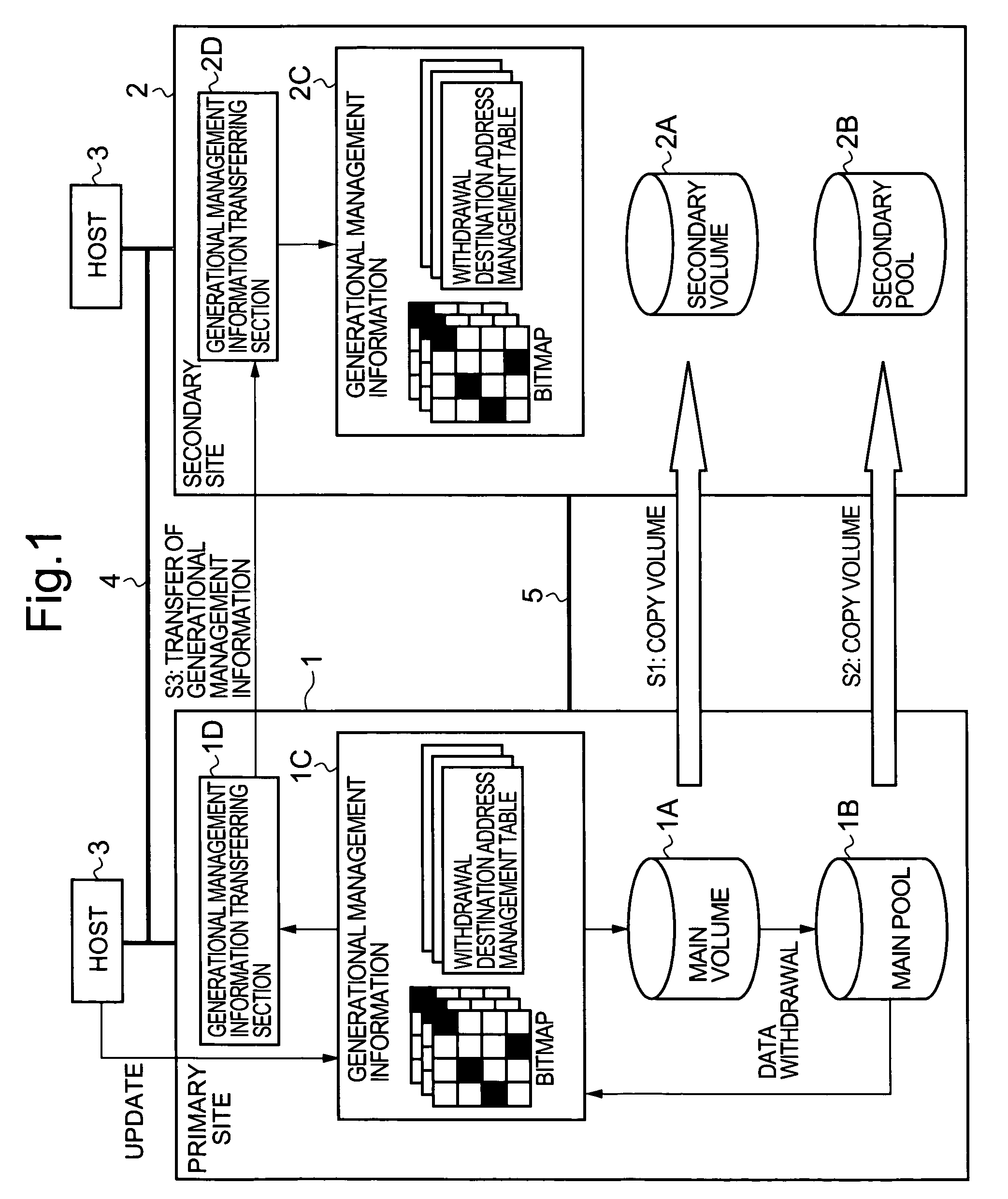Storage system and back-up method for storage system
a storage system and backup technology, applied in the field of storage systems, can solve the problems of data generation management, data cannot serve the purpose of data back-up on its own, system load increases, etc., and achieve the effect of reducing the amount of storage capacity required for back up, and reducing the amount of data transferred
- Summary
- Abstract
- Description
- Claims
- Application Information
AI Technical Summary
Benefits of technology
Problems solved by technology
Method used
Image
Examples
first embodiment
1. First Embodiment
[0047]Firstly, an example of a disk array device provided respectively in the primary site and the secondary site is described, whereupon the unique composition according to the present invention is described. The disk array device in the primary site and the disk array device in the secondary site may also have different compositions.
[0048]FIG. 2 is a general oblique view showing the external composition of a disk array device 10. The disk array device 10 may be constituted, for example, by a base frame body 11 and a plurality of add-on frame bodies 12.
[0049]The base frame body 11 is the smallest compositional unit of the disk array device 10, and it is provided with both storage functions and control functions. The add-on frame bodies 12 are optional items of the disk array device 10, and are controlled by means of the control functions provided in the base frame body 11. For example, it is possible to connect a maximum of four add-on frame bodies 12 to the base...
second embodiment
2. Second Embodiment
[0105]A second embodiment is now described on the basis of FIG. 9. The present embodiment is equivalent to a modification example of the first embodiment. The characteristic feature of the present embodiment lies in the fact that only the back-up data for a previously designated generation is transferred to the secondary site and held in same.
[0106]FIG. 9 is a flowchart showing an overview of back-up processing. Firstly, the disk array device 100 of the primary site acquires the generation to be backed up (S51). The generation for which data is to be backed up can be instructed to the disk array device 100 by the host 30.
[0107]The disk array device 100 transmits the respective storage contents of the main volume 110 and the main pool 120, to the disk array device 200 in the secondary site (S52, S53). Thereupon, the disk array device 100 respective acquires the data sizes of the differential bitmap table 151 and the withdrawal destination address management table ...
third embodiment
3. Third Embodiment
(Third Embodiment)
[0110]A third embodiment is now described on the basis of FIG. 10 and FIG. 11. The present embodiment is equivalent to a modification example of the first embodiment. The characteristic feature of the present embodiment lies in the fact that copies of a main volume, a main pool, and respective generational management information, held in the copy destination are transferred to the copy source, on the basis of an instruction from the user.
[0111]FIG. 10 is an approximate block diagram showing the general composition of a storage system. The disk array device 200 in the secondary site comprises a restoring section 270. In FIG. 10, in order to facilitate the description, the virtual volume creating section 230 is omitted from the drawing.
[0112]As shown in FIG. 11 as well, the restoring section 270 respectively transfers the storage contents of the secondary volume 210, the storage contents of the secondary pool 220, and the generational management in...
PUM
 Login to View More
Login to View More Abstract
Description
Claims
Application Information
 Login to View More
Login to View More - R&D
- Intellectual Property
- Life Sciences
- Materials
- Tech Scout
- Unparalleled Data Quality
- Higher Quality Content
- 60% Fewer Hallucinations
Browse by: Latest US Patents, China's latest patents, Technical Efficacy Thesaurus, Application Domain, Technology Topic, Popular Technical Reports.
© 2025 PatSnap. All rights reserved.Legal|Privacy policy|Modern Slavery Act Transparency Statement|Sitemap|About US| Contact US: help@patsnap.com



